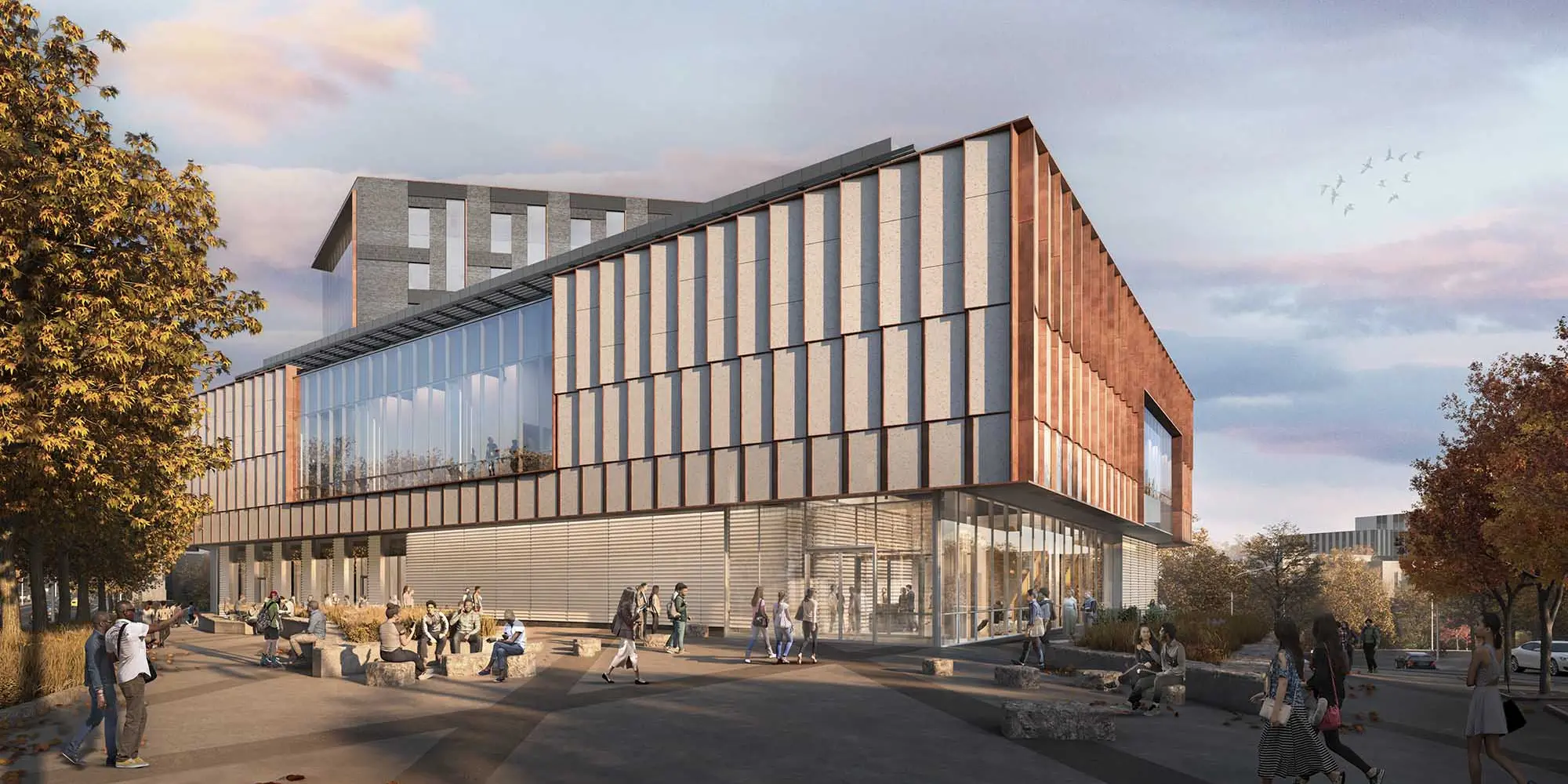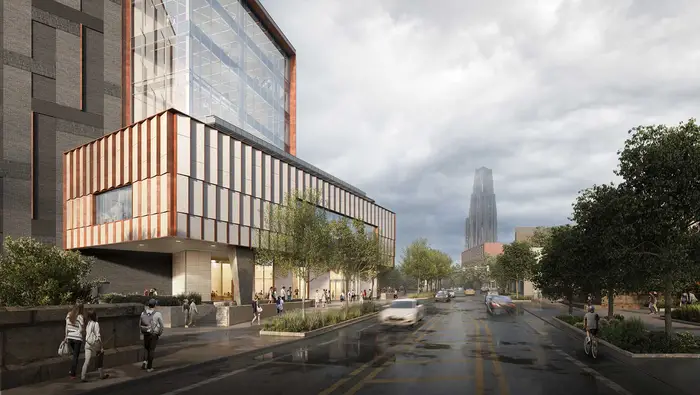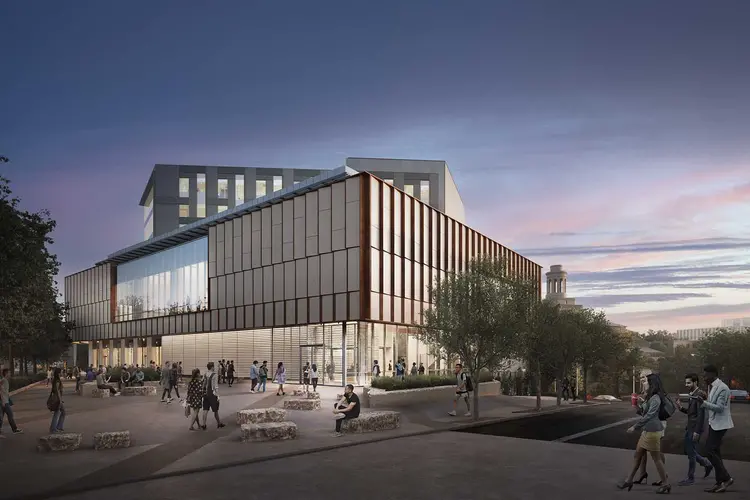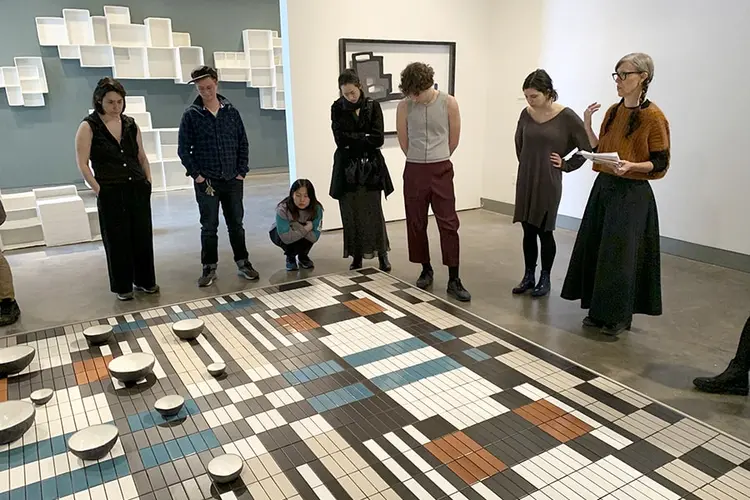
Design Unveiled for Expanded Institute for Contemporary Art in Pittsburgh
First launched in 2000, institution to be renamed ICA Pittsburgh reflecting its role shaping contemporary art discourse within the city and beyond
Media Inquiries
Carnegie Mellon University unveiled the design for the Miller Institute for Contemporary Art’s new 29,000-square-foot home, prominently located in the new Richard King Mellon Hall of Sciences at the crossroads of the university’s campus and the city's iconic arts and cultural institutions along Forbes Avenue in Pittsburgh. Designed by ZGF Architects, the new museum will nearly triple the Miller ICA’s current size, with galleries and public programming spaces that will foster cross-disciplinary inquiry and community engagement.
The university simultaneously announced that
Since first opening to the public in 2000, ICA has advanced the work of innovative artists including Dara Birnbaum, Jacolby Satterwhite, and Andrea Zittel, among many others. Its experimental and academically rigorous exhibitions and programs foreground global trends and uplift the work of Pittsburgh creatives, ranging from major thematic surveys, such as “Impossible Music(opens in new window)” curated by Candice Hopkins and Raven Chacon with Stavia Grimani, to shows spotlighting the work of students and emergent practitioners. The new ICA Pittsburgh builds on this legacy and is supported by a lead gift of $15 million from the Juliet Lea Hillman Simonds Foundation and Henry L. Hillman Foundation, two organizations dedicated to advancing civic and cultural leadership and infrastructure throughout the City of Pittsburgh.
“With a welcoming design and artist-focused mission, ICA Pittsburgh will serve as an advocate for new ideas and an aggregator of communities, providing new lines of inquiry about the most pressing issues of our time through the lens of contemporary art,” said Elizabeth Chodos(opens in new window), director of the ICA. “Our new name reflects the institutional growth and impact that the museum has had over the course of the past two decades, recognizing both the critical links we have to our audiences throughout the City of Pittsburgh, as well as the role we play on a national and international level as a nimble art institute.”
"As the cultural and civic anchor of the Richard King Mellon Hall of Sciences, the new ICA Pittsburgh will be an important point of connection between the city and university campus." — Mary Ellen Poole
In its new home, the ICA will be able to expand its programmatic offerings in dialogue with the Carnegie Museum of Art that it will directly neighbor, and better serve its growing audiences, including scholars, students and faculty, as well as visitors from throughout the region and country. Embracing unprecedented possibilities for interdisciplinary learning, the ICA Pittsburgh will be a key part of CMU’s new Richard King Mellon Hall of Sciences — a dynamic building complex conceived to foster collaboration across the arts, sciences and technology; and that will house classrooms, laboratories and faculty offices for departments from CMU’s Mellon College of Science(opens in new window) and School of Computer Science(opens in new window) in addition to the new ICA.
“As the cultural and civic anchor of the Richard King Mellon Hall of Sciences, the new ICA Pittsburgh will be an important point of connection between the city and university campus,” said Mary Ellen Poole(opens in new window), the Stanley and Marcia Gumberg Dean of the CMU College of Fine Arts(opens in new window). “At the same time, it will amplify and extend the historic cultural offerings of Forbes Avenue, which include the Carnegie Museums and Carnegie Library, providing a continuum of cultural and artistic experiences for our university community and the public alike.”
The ICA will continue operations under its current name of Miller ICA while at its current facility in the Purnell Center for the Arts. Groundbreaking for the new building is expected in spring 2024, with a public opening planned for 2027.
The Design of the New ICA Pittsburgh
Sited at the intersection of Forbes Avenue and Craig Street, the new ICA Pittsburgh is the civic and cultural anchor of the new Richard King Mellon Hall of Sciences.
Designed by ZGF Architects, the 338,900-square-foot building complex is conceived as a two-part structure: the loop where the building reaches out to the Pittsburgh community and houses the ICA Pittsburgh, as well as other public and university spaces; and the tower, where both the Mellon College of Science and School of Computer Science academic and research facilities will be located. The massing and distinctive facades of the loop and the tower create a dynamic and interactive experience of the structure, depending on the angle from which it is approached.
The façade of the loop will be clad with locally made, ultra-high performance concrete panels that grow upwards three stories in a Fibonacci sequence evocative of the thistle, the national flower of Scotland and the centerpiece of the university’s seal. The panels are complemented by an aluminum trim that creates a lenticular effect, which reflects concepts of movement, growth and innovation central to both the ICA and CMU.
The tower is set back from the main public entrance, covered in elaborate interlocking brickwork inspired by tartan plaid, another of CMU’s symbols.
Visitors to the ICA Pittsburgh will approach the building through a public plaza that connects to the Carnegie Museum of Art, whose northeast entrance lies directly across from the loop.
Enhanced with public art commissions, this new civic space extends the cultural corridor of Forbes Avenue and welcomes students, residents, and visitors of Pittsburgh the opportunity to experience a full spectrum of artistic expression, from the contemporary programs of the ICA to the encyclopedic collections of the Carnegie Museums next door. Floor-to-ceiling glass windows and doors draw visitors inside the building’s lobby into the museum’s first floor gallery. The first floor of the building also includes public spaces and classrooms, as well as a restaurant.
A staircase leads visitors to ICA’s second floor, also accessible by elevators, where three additional exhibition galleries unfold. These galleries are modular and can be reconfigured and combined to support the needs of ICA’s experimental exhibitions and programs. They are organized around a central spine, which serves as a public programming and educational space for the ICA, marking the first time in the museum’s history that it will have dedicated space for public programs, including lectures, symposia and artists talks. A large, window-lined corridor creates another point of connection between the interior and the exterior, heightening the visibility of ICA initiatives, and highlighting the key role the ICA will play in connecting the existing CMU campus with Pittsburgh’s historic arts district.
“Our practice prioritizes community connectivity and engagement, values that extend to all our work, but especially in the spheres of higher education, science, and technology, and in the public realm. The design of Richard King Mellon Hall





